The Samsung Galaxy S7 & S7 Edge Review, Part 1
by Joshua Ho on March 8, 2016 9:00 AM ESTGPU Performance
On the GPU side of things, Qualcomm's Snapdragon 820 is equipped with the Adreno 530 clocked at 624 MHz. In order to see how it performs, we ran it through our standard 2015 suite. In the future, we should be able to discuss how the Galaxy S7 performs in the context of our new benchmark suite as we test more devices on our new suite to determine relative performance.
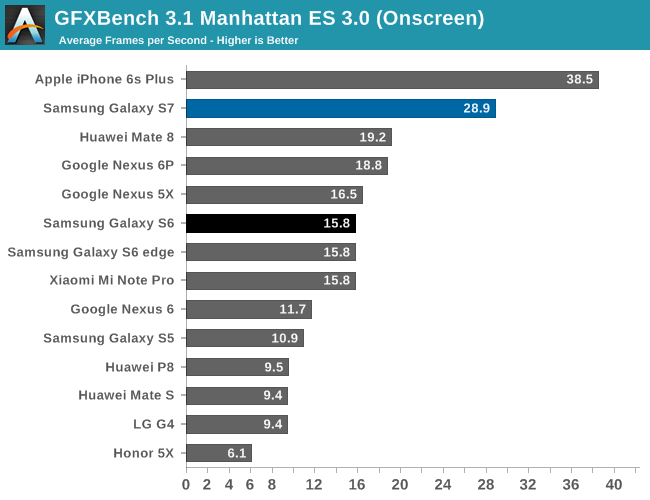

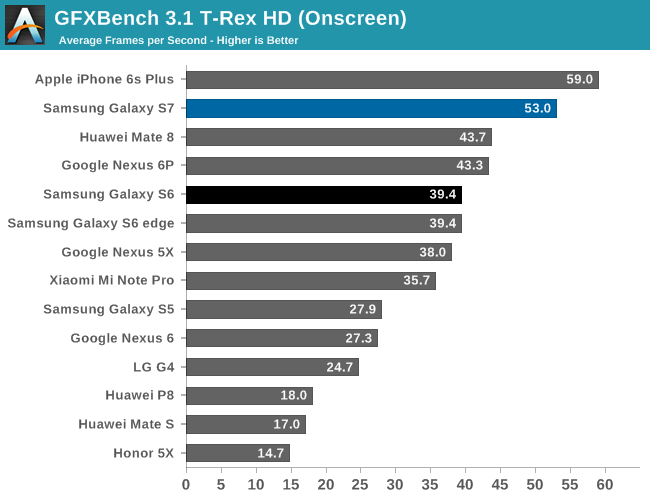
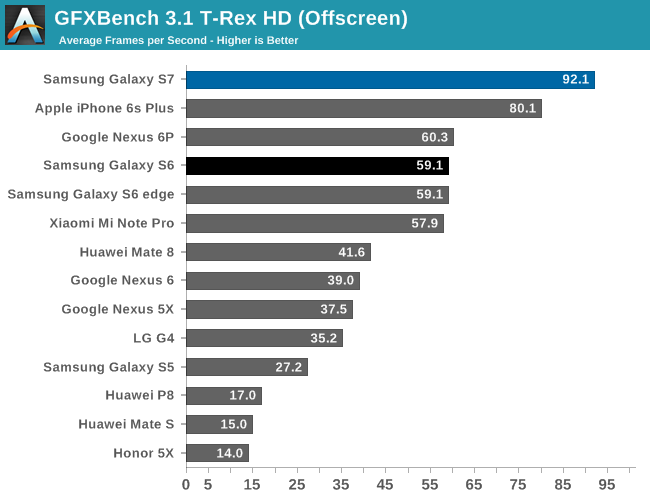
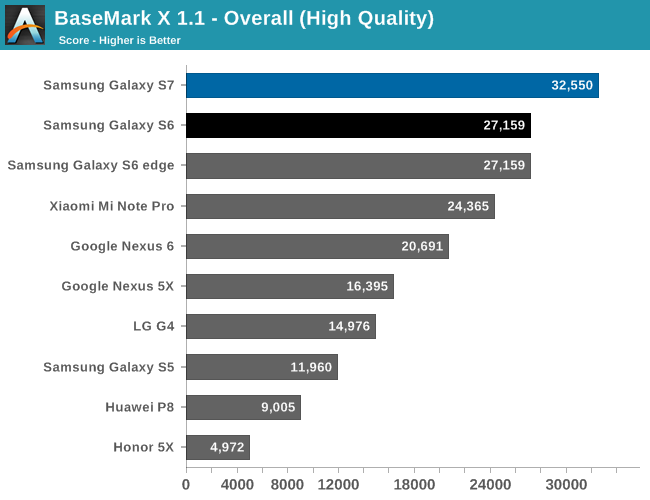

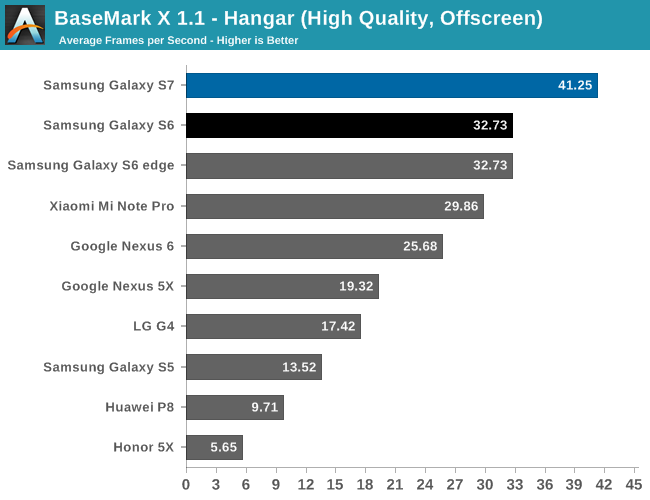
At a high level, GPU performance appears to be mostly unchanged when comparing the Galaxy S7 to the Snapdragon 820 MDP. Performance in general is quite favorable assuming that the render resolution doesn't exceed 2560x1440.
Overall, the Adreno 530 is clearly one of the best GPUs you can get in a mobile device today. The Kirin 950's GPU really falls short in comparison. One could argue that turbo frequencies in a GPU don't make a lot of sense, but given that mobile gaming workloads can be quite bursty in nature and that gaming sessions tend to be quite short I would argue that having a GPU that can achieve significant levels of overdrive performance makes a lot of sense. The A9 is comparable if you consider the resolution of iOS devices, but when looking at the off-screen results the Adreno 530 pulls away. Of course, the real question now is how the Adreno 530 compares to the Exynos 8890's GPU in the international Galaxy S7, but that's a question that will have to be left for another day.










202 Comments
View All Comments
buxe2quec - Tuesday, March 8, 2016 - link
And I'm still wondering... how is it possible that years after various websited emphasized the better alignment and design of the connectors and perforations of the iPhone, Galaxies are still aligning them with no care at all? check that top side with the slots and holes thrown there randomly and that bottom side with the four holes (or groups thereof) aligned in FOUR different ways.But hey at least Apple supporters won't say they are copying everything...
Dobson123 - Tuesday, March 8, 2016 - link
I couldn't care less.name99 - Tuesday, March 8, 2016 - link
Fair enough. But don't then complain that it's "unfair" when Apple sucks up 80% of the profits in this sector. It's attention to details (ALL details) that allows a company to charge more...lilmoe - Tuesday, March 8, 2016 - link
Attention to detail hardly has anything to do with the port alignment at the bottom of the phone, and more so with the antenna bands on the back and the cheap choice of aluminum alloys in previous models (changed only after "bending" to public pressure, pun intended).A nice finish =/= quality. A polished piece of cheap glass looks better than a rough diamond.
Most of Apple's attention to detail goes to media, perception, image, supply chain, and money making business models. Well, at least more so than their attention to hardware.
You have good points here and there, but your fanboyish attitude ruins the good parts...
theduckofdeath - Tuesday, March 8, 2016 - link
Exactly. And there is a pretty good reason why the SD/SIM slot is on the side on the top. It can't be in the same location as the camera's. Apple have displaced the camera to a corner, that's not very symmetric in my eyes. And like you, I've never been a fan of those plastic separators on the back on all-metal phones.End of the day, manufactures are always doing deliberate design differentiations to make sure their hardware is distinguishable from a distance. Most people can easily identify a Samsung phone when someone's using it, simply because they've stuck to the same camera design/location since the Galaxy S2.
tipoo - Tuesday, March 8, 2016 - link
I think you mean this?http://www.imore.com/difference-apple-samsung-indu...
That was about the GS6 and only just started making its rounds, after Samsung finally tried to make nicer designs. I mean, I agree with you, it's such a bizarre miss, but when you say "years and years", it's really, "year", or less.
grayson_carr - Wednesday, March 9, 2016 - link
Well if the Galaxy phones had bezels the size of Texas like the iPhones, I'm sure they could align the ports better because they'd have more room to work with.syxbit - Tuesday, March 8, 2016 - link
"While not quite going from zero to hero, Qualcomm has come close, and that definitely deserves some credit."I disagree. Giving them credit because of the large improvement over the awful SD810 doesn't make sense.
Instead of a comparison to last years garbage, give them credit for how SD820 performs compared to todays best SoCs. It turns out SD820 isn't really leading that much. It's mostly still behind a year old Apple chip.
whiteiphoneproblems - Tuesday, March 8, 2016 - link
"Always-On Display is nice to have, but for some reason it only polls the ambient light sensor, so the display won’t actually turn off in your pocket."This is strange and disappointing. I wonder why it does not use the proximity sensor.
whiteiphoneproblems - Tuesday, March 8, 2016 - link
...and as a stab at answering my own question: I assume constantly polling the prox sensor would cause a greater battery hit than simply leaving the display on all the time (including in pocket)?Would be interesting to chart battery life with AOD on vs. off (in some kind of controlled way, of course).